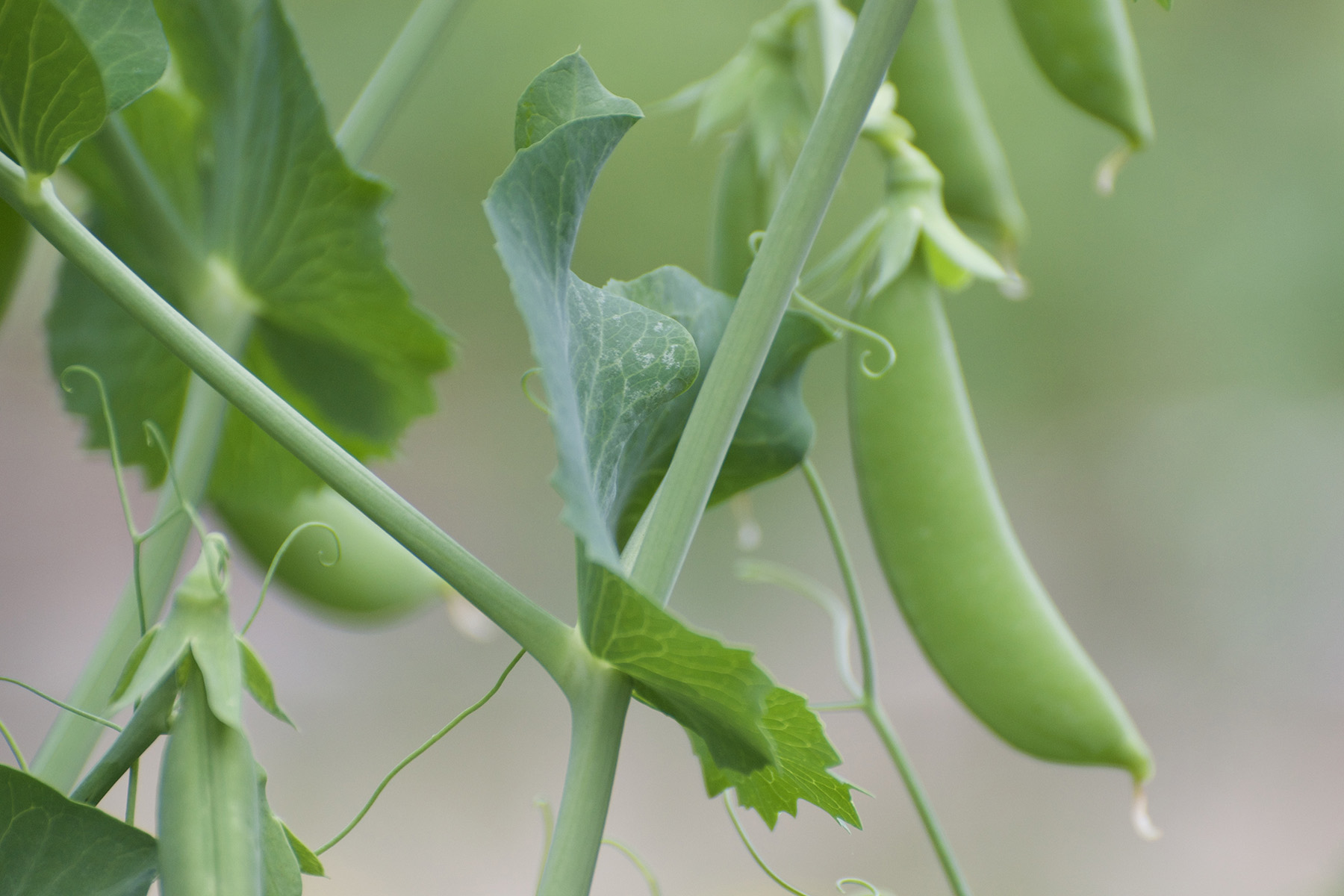In truth, today is all about peas, their luminescence, their daintiness, their curlycues and their service to science. The sheep play a minor role, just in as much as they were of great economic value to the monasteries that raised and sold them 150 years ago. When imports of Australian wool tightened the financial competition in the mid 1800s at least one Abbot, Cyril Knapp of St. Thomas monastery in Brünn (Brno, Czech Republic,) was prescient enough (and worried enough about profit margins) to allow in-house scientific studies to understand the laws of inheritance, which might help breed sheep for better quality or faster growing wool.

Luckily a scientist was at hand, a novice who had chosen St. Thomas as an order known for enlightened thinking. With its Augustinian credo per scientiam ad sapientiam (“from knowledge to wisdom”), the monks focused on scholarly teaching and research, as well as having a reputation for being culinary wizards.

His name was Mendel, of course. Formerly Johann, now novice Gregor, son of poor peasants, protégé of numerous professors at the university in Vienna where he studied mathematics, botany and physics (which he failed miserably just as he failed later teachers’ exams, twice…) Haunted by depression and too poor to continue his studies, he was persuaded to join the monks.
The Mendel, who chose peas as his field of study after the monks discovered his laboratory of black and white mice in his monastery cell, promptly nixing in vivo experiments involving sex.

What Mendel brought to the field of genetics, (he is really assumed by many to be the actual father of that field,) was rigorous scientific experimentation, botanical research techniques – and mathematics. He basically figured out fundamental laws of inheritance and ALSO calculated their statistical probability. (Ref.)

5 acres of garden, one greenhouse. 28.000 to 29.000 pea plants cultivated between 1854 and 1856, because they were easy to grow, came with visibly different traits, and could be easily pollinated. For two years he grew strains that were absolutely pure, along one of 7 dimensions that he chose to observe: the height of the plant (short or tall) the color of the flower (white or purple,) its position on the stem, the seed shape and color, the pod shape and color. Literally he grew and tested 34 varieties of garden peas for these traits to be consistent across several generations. Two full years devoted to a base-line control group!

Then he started to explore what would happen when he hybridized these pure varieties. Would cross-pollinating a tall plant with a short one create medium height? Would cross-pollinating a white flowering plant with a purple one lead to pink blossoms when you planted the seed?


Surprise. Some “factors” (what we call genes today) were dominant, while others were recessive for certain traits. In the first generation of cross-pollinated peas, for example all would have purple flowers, the white ones being masked. However, and here is where his mathematical observation started to reveal new insights, if you counted what happened in the next generation, you would find a 3:1 ratio – for every 3 purple flowering plants, a white one would re-emerge. It took almost a decade to reveal a truly reliable pattern. Ten years of growing, pollinating, observing, measuring, recording peas. Nothing but peas.
Eventually he published his work, “Experiments in Plant Hybridization” in 1866 in Proceedings of the Natural History Society of Brünn.

Deafening silence. About three citations over the next 35 years. He died, painfully, of kidney disease before the importance of his discoveries were understood and the hereditary factors he had inferred identified by modern genetics. Contemporary research on genetics has, of course, revealed more complicated patterns of inheritance, including the fact that sometimes there can be co-dominance of two traits, or incomplete dominance of one, but the basic ideas stand: he figured out how living systems send their genes down to the next generations, and how dominant genes mask recessive ones until they don’t.
I am trying to grapple with the psychology of this scientific mind. Having ideas that were revolutionary for the times, and no one, really, to talk to. He sent a manuscript to Darwin, but that was found among the latter’s papers, unread. He prayed with his monks, he administered the monastery, (appointed abbot at some later point,) he taught some kids, but where would he find the discussion partners so necessary to develop ideas and have them questioned? Dedicated to a single type of plant, its size and color, the smoothness of its seeds, doggedly pursuing the idea that there needed to be something, some thing that made off-spring carry the traits of its progenitor, that made children look like their parent, or have certain traits skip generations (one wonders if there was a history of depression in his family or hair color that might have been recessive.) Next time I complain about lack of mobility in these Covid – 19 times, I will just think: 3000 or so days with nothing but peas behind the cloister walls!

The mechanisms of inheritance is a fascinating topic, made even more interesting when you have a person who is in equal parts gifted writer and scientist, help you understand its history. Siddhartha Mukherjee does just that in his book “The Gene.” Here is a review that could not be more enthralled if it tried…. and here is a link to a trailer of the PBS program they filmed, based on the book. Full program is available if you are a member of your public station. Given the author’s stunning success with The Emperor of all Maladies one might have wondered how that can be followed up. Wonder no more.

Music by Dvorak, Mendel’s Czech compatriot, the most bucolic of his Symphonies – maybe there are sheep to be heard in there after all…….






Sara Lee
A wonderfully interesting, informative, charming posting! Move over, Mr. Mukherjee….